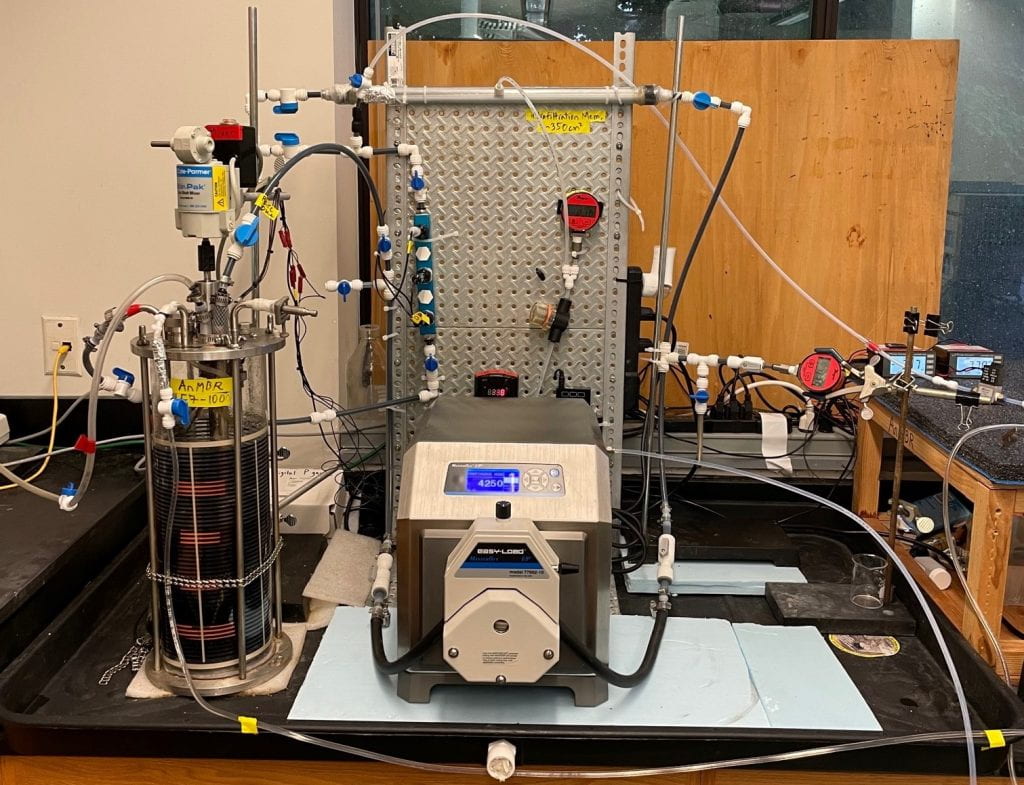Microalgae
Microalgae are incredibly diverse photoautotrophic microorganisms (>30,000 species) that take advantage of CO2 and sunlight to generate valuable organic molecules at unparalleled efficiencies (photosynthetic efficiency > 2X higher than any terrestrial crop). They can generate biofuels, bioplastics, single cell proteins, antioxidants, pigments and niche pharmaceuticals – all while sequestering atmospheric carbon (1.5-2 g-carbon per g-biomass). We recently collaborated on a Dept. of Energy grant with the GT Department of Chemical and Biomolecular Engineering and Global Thermostat to demonstrate pilot-scale integration of direct air capture of ambient carbon dioxide with microalgal photobioreactors for carbon capture and storage via biomass production (photo below).

Previously we collaborated with Arizona State University, Cellana, Cal Poly, and Florida Algae, along with NREL and Sandia National Labs on a set of country-wide pilot-scale open raceway pond experiments funded by the Dept. of Energy (Algae Testbed Public-Private-Partnership). These experiments established the first DOE State of Technology Assessments for Algal Biomass Production in Open Raceway Ponds.


Here, a microalgae strain known as Galdieria sulphuraria is being cultured to study rare earth element (REE) biosorption and bioaccumulation. REEs are increasingly being used in the manufacture of catalysts, magnets, batteries and other modern technologies. They have been designated critical materials due to difficulties in REE mining, separations and recovery, and supply disparities (China produces the majority of global REEs). Galdieria sulphuraria is an acidophilic extremophile, originally isolated from sulfuric acid hot springs. It thrives in acidic environments (~pH 1), can utilize photosynthesis or organic carbon for energy, can grow at temperatures above 50 C, and exhibits high salinity and heavy metal tolerance, making it an interesting candidate for dissolved REE recovery.
Anaerobic Digestion
Anaerobic digestion (AD) is a multi-step, concerted reaction pathway that relies on a rich consortium of anaerobic microbes to convert waste substrates into value-added products. These microbes are able to convert waste chemical oxygen demand (COD) into biogas (i.e., methane and carbon dioxide), which can be harvested as an energy source. Our lab is particularly interested in using AD as a method to recover nutrients (e.g., nitrogen and phosphorus) from waste substrates and reusing them for agricultural purposes. We study AD through two systems, namely (1) an anerobic membrane bioreactor (AnMBR), which integrates AD with ultrafiltration, and (2) biochemical methane potential (BMP) testing, which examines the methane potential and overall biodegradability of various waste substrates.



